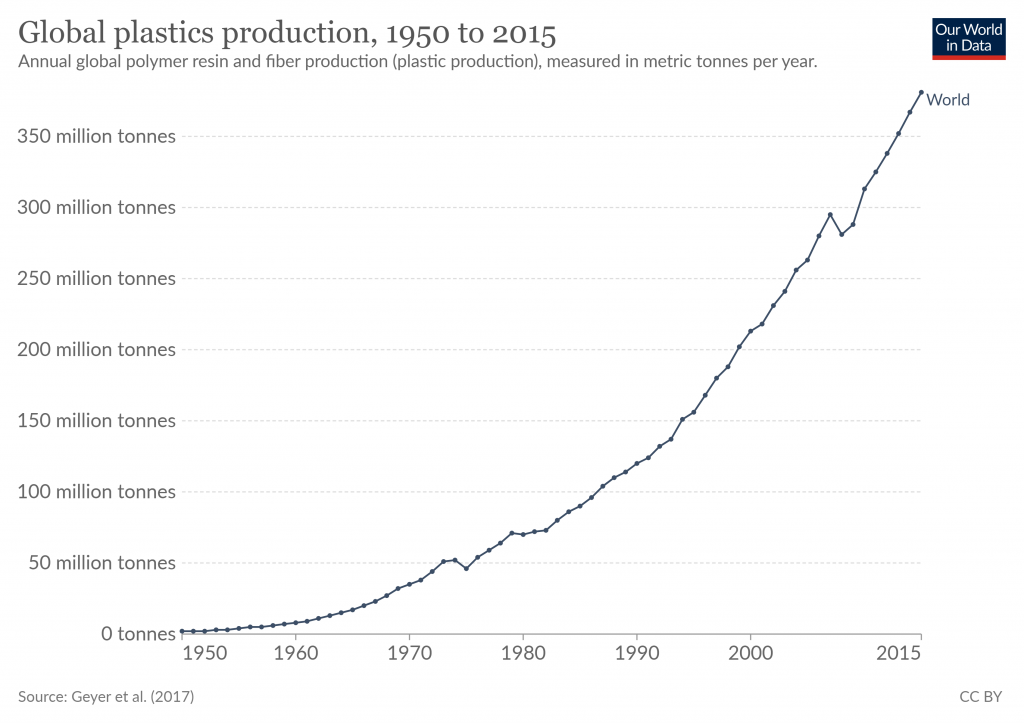7+ Revealing Plastic Waste Statistics (2021)

Which plastic waste statistics will make the largest impact on your recycling programs next year? Here are answers to the most asked questions on plastic waste, pollution, and recycling in 2021.
As a recycling coordinator, it’s your job to motivate municipal residents to recycle better. That means developing programs that make it easy for people to recycle plastic correctly, while also making educated purchasing decisions in their day-to-day lives.
According to a recent study, by the year 2030 some 53 million tons of plastic will exist in our oceans, rivers, and lakes. That’s with the current global efforts in play to reduce plastic waste! It will take data, creativity and testing to give every recycling program you launch the impact it needs.
It starts with context – so here are 7+ plastic waste statistics to inform your journey.
#1: How Much Plastic is in The World?
According to the Environmental Protection Agency, Americans generated 35.7 million tons of plastic in the United States. Some 12.2% of that makes up the total municipal solid waste generated.
Here are some plastic pollution statistics that matter:
- Globally to date, there is about 8.3 billion tons of plastic in the world – some 6.3 billion tons of that is trash. Imagine 55 million jumbo jets and that’s how much plastic exists here.
- In 1950, we created 2 million tons a year, which increased 200-fold by 2015.

#2: How Much Plastic is Recycled Each Year?
One of the most critical plastic waste statistics concerns how much is recycled. The reality is that the majority of plastic is never recycled.
Even though plastic is technically a sustainable material – because it’s far cheaper to make new products from scratch, recycling plastic is economically inefficient and undesirable.
- Only 8.7% of all plastic waste was recycled in 2018 in the US.
- Many recycling programs only accept limited plastics (#1 and #2).
- Only plastic bottles are regularly recycled.
There is a serious need for greater investment in more efficient plastic recycling mechanisms, programs, and educational tools for your residents.
#3: How Much Plastic is Not Recycled?
Clearly, the plastic waste problem is here to stay. With the overwhelming bulk of plastic stuck in our landfills or incinerated (giving off harmful gasses), the only solution is to discourage residents from buying disposable plastics, and to encourage them to recycle what they can, effectively.
- 91.3% of all plastic waste generated in the US was not recycled (2018).
Plastic recycling statistics seem to end at 2018, with current data not yet released by the EPA. What we do know is that 2020 and 2021 saw record breaking deliveries because of the pandemic, and plastic was a key material used in this boom.

#4: Which Type of Plastic is Most Recyclable?
There is one type of plastic that is recycled at a higher rate than others – HDPE plastic. It’s considered to be the safest and most cost-efficient plastic to recycle. You would know it as a waste bin, or milk jug, or children’s toy. The second most common is PET, or your everyday drinks bottle.
- 29.1% of PET bottles and jars, and 29.3% of HDPE natural bottles were recycled in 2018.
- Not all plastic is easily recyclable and the number system matters.
#5: Which Type of Plastic Needs to Be Recycled More Often?
Considering the maximum recycling rate for both HDPE and PET is only around 30%, these materials should be an ongoing focus for your educational initiatives.
- High Density Polyethylene: milk jugs, shampoo bottles, water bottles, containers.
- Polyethylene Terephthalate: Beveridge bottles, food containers, cleaning containers.
#6: How Much Plastic is in the Ocean?
It’s impossible to say exactly how much plastic has ended up in the ocean since 1950, but we do know that about 8 million metric tons is added each year. That amounts to five grocery bags filled with plastic for every 1 foot of coastline on earth.
Here are some plastic waste statistics about marine life:
- Plastic trash kills ocean life – entanglement, ingestion and interactions are to blame.
- Microplastics are ingested by numerous species which harms their metabolic rate and growth.
- Coastal cleanups are important and make a real difference to the local ecosystem. Encourage businesses and residents to band together to cleanup plastic waste.

#7: Is 100% Recycled Plastic Possible?
A new generation of plastics has been developed by researchers that is easier and cheaper to recycle. There are products made from plastic that are 100% recyclable, but it’s important to remember that just because they can be – doesn’t mean they are!
Fast Plastic Pollution Facts
- More plastic waste ends up in the landfill every year (it’s still climbing).
- Plastic recycling has barely improved since 2017.
- Only 12% of all plastic has been incinerated.
- Plastic takes 400 years to degrade.
Check out this recycling statistics article for more.
Use these new plastic waste statistics to guide your actions for next year’s recycling program. Compare them with your local data and decide how you are going to tackle the plastic recycling issues in your area. With the right plan, you can and will help people recycle better.
Which plastic statistic jumped out at you and why? Tell us about it here.